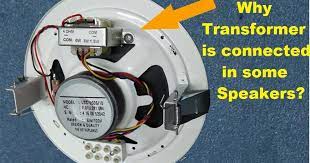Several Applications Of Audio Transformers

An audio transformer consists of an electromagnetic system that helps in separating an input circuit from an output circuit, thereby producing a signal that passes through it. It is a transformer that has been designed to work at audio frequencies which range between 20Hz and 20k Hz.
An audio transformer is a device that helps create the perfect blend of musical instruments and vocals in a music studio.
It was initially designed to have a convenient long-distance conversation, but now music professionals extensively use it. And for learning more about audio transformers, you can read more here.
What Are The Main Functions Of Audio Transformers?
Audio transformers serve two main functions, which are –
- Matching the impedance: Often, there are variations between the impedance of output stages of the amplifier circuits from the impedance of the audio speakers. It is essential that for maximum power transfer, the impedance of the output stages of the amplifier circuits remain the same as the impedance of audio speakers. The audio transformers play a significant role in equalizing the difference in impedance, ensuring maximum power transfer.
- Blocking DC: The output amplifier’s signal is usually low, and it is superimposed by a very high voltage DC signal. It is necessary to remove the DS signal from the composite signal before it enters the loudspeakers because it affects the audio output of the loudspeaker and may even damage it. Traditional transformers cannot pass Dc, so audio transformers are used to prevent the entry of any Dc signal from the amplifier.
What Are The Various Specifications Of An Audio Transformer?
Here are some specifications and a brief understanding of them:
- Power levels: Power level depends on the capacity of an audio transformer to handle the current.
- Frequency response: This indicates that the voltage output levels at this frequency range do not vary more than typical limits. The lower frequency is controlled by primary inductance, while leakage inductances control the high-frequency response.
- Total Harmonic Distortion: It is a function of operating flux density in the core. The distortion is higher at low levels due to magnetic hysteresis and at higher levels due to magnetic saturation.
- Insulation resistance: The windings of the transformers are adequately insulated to ensure proper flow of current, and this insulation provides a resistance that is reduced by an audio transformer.
- Impedance: There is a fixed impedance ratio which is the ratio of primary and secondary according to the application.
- Rated DC: It is defined as the amount of current that can be passed through a transformer without causing any damage. The DC level is mainly based on the temperature rise at the maximum rated ambient temperature.
- Insertion loss: It measures the power available out of the secondary vs. power input of the transformer. The most common reason for the loss in transformers on which insertion loss is dependent is DC current.
What Are Some Applications Of Audio Transformers?
Audio transformers are used in a variety of fields as the following:
- Galvanic isolation
- Gain or Loss of signal
- Matching the impedance between two interfaces
- As a reference
- To provide feedback signals.
Conclusion!
We hope you have good clarity about the audio transformer, their detailings, and their applications, and if you still have further doubts, you can read more here.





